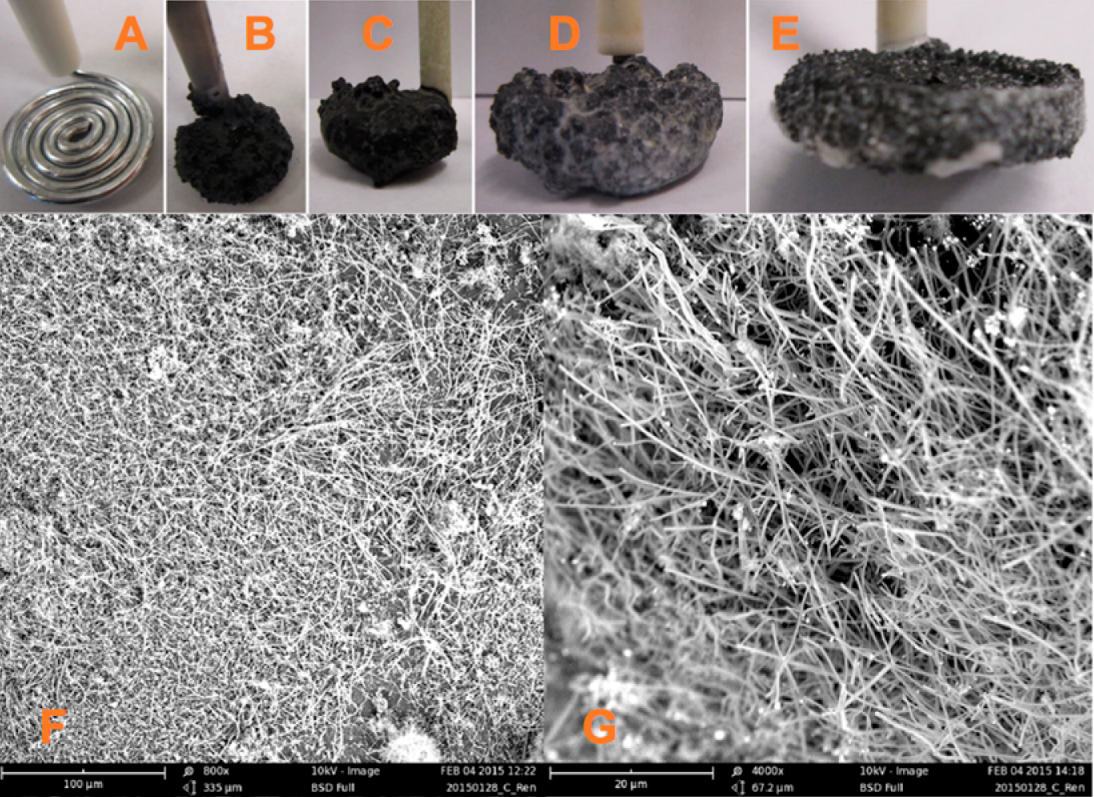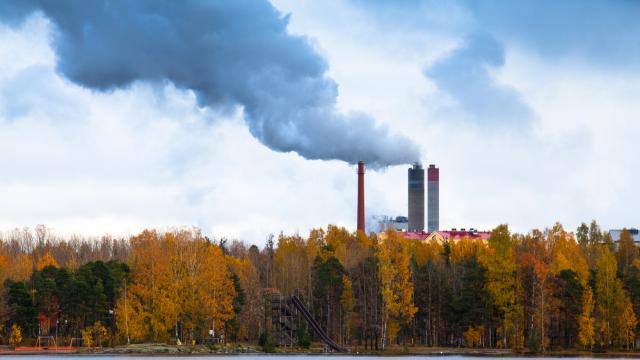Carbon nanofibers are an incredibly exciting material. They have been around for a long time, but still aren’t common, partially because they’re difficult and expensive to make. Now, a team of engineers say it figured out a simple way to make them — by sucking carbon dioxide straight out of the atmosphere.
The research, which was published in the American Chemical Society’s Nano Letters and presented today by its authors, is part of a growing body of study that looks for ways to “capture” or “sequester” carbon in the atmosphere by trapping it. There are a number of different ways to do the trapping: One project in Iceland is injecting carbon dioxide into porous basalt rock, where it is mineralized and then buried, making it impossible for it to seep into the atmosphere. And just this month, the Department of Energy discovered a copper material that can be used to turn captured CO2 into fuel.
The group of researchers behind the new study, from George Washington University’s Department of Chemistry, are pursuing another approach to gobbling up pesky CO2. The idea is to take the captured gas and then subject it to an electrochemical process that turns it into carbon nanotubes — which have, historically, been very difficult, wasteful, and expensive to manufacture. Instead, their “one pot” method uses two electrodes in a “pot” of lithium carbonate.
When electricity passes through the liquid, carbon fibres start to form on the cathode (the anode, meanwhile, produces oxygen!). The researchers report that a low voltage creates carbon nanotube structures, at a cost far lower than normal manufacturing methods.

They even note that they tried out the “one pot” approach using power harvested from photovoltaics to heat the molten lithium carbonate:
Atmospheric carbon dioxide is then bubbled through the cell. The CO2 reacts with the lithium carbonate, and depending on the reaction temperature attained, either solid carbon is deposited at the cathode or carbon monoxide is produced. This conversion of carbon dioxide into solid carbon is facilitated by the visible rays of the sun that drive the reaction, when the visible rays are converted to electricity through photovoltaic techniques.
To review, they made one of the most difficult and expensive — yet promising — materials out of a gas that’s causing extraordinary harm to our world, using heat from the sun. So, what can be done with the resultant material? The authors finish up their report by saying that their next study will focus on the strength and other aspects of the resulting tubes, but they do have some inkling of how this strong, lightweight stuff could be used — infrastructure, for example, or buildings themselves, or for high-performance composites.
As MIT Technology Review rightfully points out, one caveat to all of this is the fact that a cheaper, easier way to make carbon nanofibers doesn’t necessarily provide an impetus for any industry to start using them. Right now, there just isn’t a market for the stuff; no surprise, given that it costs 30 to 100 times more to make than aluminium at the moment.
Eventually, thanks to this research, that price could drop precipitously. And it’s easy to see how integrating a building panels that are actually carbon negative could be a popular idea in the building industry — which is finally coming under scrutiny as a major source of the CO2 in our atmosphere.
[One-Pot Synthesis of Carbon Nanofibers from CO2 h/t MIT Technology Review; lead image via De Visu]
